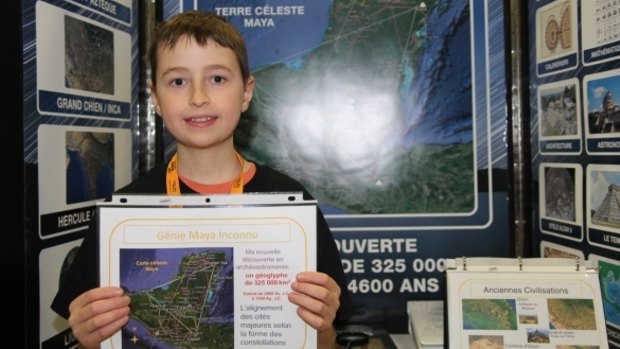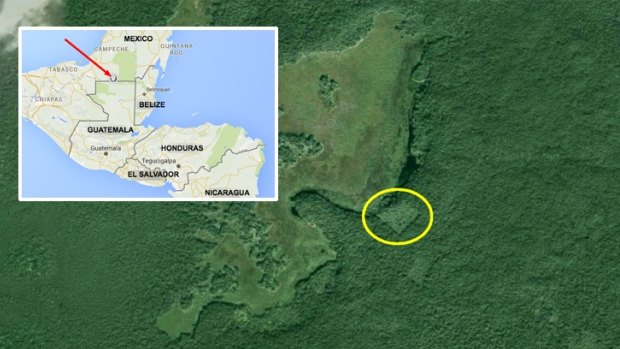This was published 7 years ago
Canadian teen William Gadoury's discovery of 'Mayan city' debunked as junk science
By Julie Power
The apparent discovery of a previously unknown Mayan city in the Yucatan jungle by a 15-year-old Canadian boy has been dismissed as "junk science" by a US archaeologist who was also a child prodigy at the same age on the same subject.
Others think the new "city" may be a cornfield.
Young Canadian William Gadoury claims to have found that the location of Mayan cities correlated to the position of stars in the civilisation's galaxies.
When he compared star maps from ancient books with Google Earth images of the Yucatan Peninsula, he found the location of the cities corresponded with the position of stars. Larger cities even corresponded with brighter stars.

William Gadoury, 15, from Quebec has apparently discovered a lost Mayan city.
William's fascination with the Maya began as a hobby in 2012, and grew.
"I did not understand why the Maya built their cities away from rivers, on marginal lands, and in the mountains," William told the French language newspaper Le Journal de Montreal.
"They must have had another reason and, as they worshipped the stars, the idea came to me to verify my hypothesis. I was really surprised and excited when I realised that the most brilliant stars of the constellations matched the largest Mayan cities."
William noticed that two of the stars in a certain three-star constellation corresponded with two known cities but the third star did not have a known counterpart city, and so he began investigating if the third star could also have a match.

Aerial image showing the location of the ,osty Mayan city in Mexico's Yucatan province.Credit: Google Maps
The teen began studying satellite images he had requested from the Canadian Space Agency until he found what appeared to be human-built structures overgrown by foliage deep in the Yucatan jungle in south-eastern Mexico.
It is this "city" - comprising a pyramid and about 30 buildings - that he claims to have discovered, and named K'aak Chi, or Mouth of Fire, in the Mayan language.
But David Stuart, an archeologist who is also famous for his Mayan discoveries as a teenager, described the discovery as "false".
"The whole thing is a mess - a terrible example of junk science hitting the internet in free-fall," said Dr Stuart who is the David and Linda Schele Professor of Mesoamerican Art and Writing at the University of Texas at Austin.
"The ancient Maya didn't plot their ancient cities according to constellations. Seeing such patterns is a Rorschach process, since sites are everywhere, and so are stars.
The square feature that was found on Google Earth is indeed man-made, but it's an old fallow cornfield, or milpa," he said.
Dr Stuart avoided blaming William, saying he was "clearly smart and enthusiastic about archaeology and the Maya", and had talent worth nurturing.
Instead he criticised so-called experts who had publicised his discovery.
"What steams me most here is the irresponsibility of 'experts' who sought the media exposure," he said on his Facebook page.
Dr Stuart, the son of Mayan experts who frequently visited the area, rose to fame at a young age. He was only 15 when he was made the lead epigrapher - studying Mayan signs - on a National Geographic expedition in Guatemala.
It was then that he discovered a new syllable in the Mayan language that had stumped dozens of researchers before him, he told a publication in Texas.
At 18, he became the youngest winner in history of the MacArthur Fellowship, or "genius grant".
His discovery was chronicled in Breaking the Maya Code, a documentary by NightFireFilms.
Canadian expert Daniel De Lisle, from the Canadian space agency, said experts and scientist agreed that William's discovery was exceptional.
William's discovery, like that of any other precocious child, has prompted awe, envy and some jokes on social media such as this:
And this one ...
With EFE